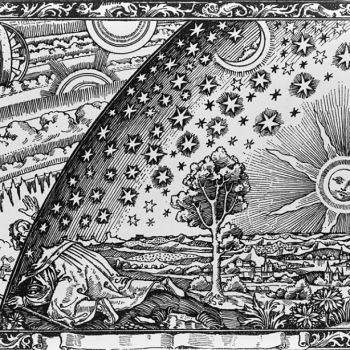 The Calling of the First Disciples (1:35-50)
The Calling of the First Disciples (1:35-50)
John 1:35-50 recounts several stories of the calling of Jesus' first disciples. What is a disciple, and what did discipleship imply in the first century? In John, Jesus is frequently called by the Aramaic title Rabbi (1:38, 1:49, 3:2, 3:26, 6:25, 20:16), which is explicitly said to translate into Greek as teacher (didaskalos) (Jn. 1:38, 20:16). In first-century Jewish society, disciples (Greek: mathētēs; Hebrew: talmîd; Aramaic: talmîdā') were simply students of a teacher/didaskalos/rabbi. When Jesus is described as having disciples, this means he had students who followed him and studied under him. However, the teacher-student relationship in ancient Palestine was much more intimate than that found in modern universities.
Disciples in the first century were groups of regular students who studied with, followed, and lived with an exemplary wise man. Student-teacher relationships were characterized by close personal friendships, the transmission of traditional teachings of the broader society as well as the new and unique teachings of the teacher, communal meals, and often communal living. Disciples often helped the Teacher with various aspects of daily life, and ran errands for him—this in part as a type of payment for teaching. Membership was both formal and informal; some disciples were explicitly identified and accepted as such by the teacher, while others were essentially curious onlookers. An inner circle of special students was not uncommon.
Ancient "schools"—that is, teacher-disciple groups—focused on communal teaching, learning, studying, and writing. Disciples were generally younger than the Teacher, meaning that most of Jesus' disciples were probably in their 20s, though some were possibly late teenagers. It was also possible for a disciple to migrate from teacher to teacher, spending a few months or even years with each. For example, beginning at age 16, the priest Josephus began to investigate a number of different Jewish "schools," spending three years with a wilderness ascetic named Bannus, and additional time with the Pharisees (Josephus, Life, 2 §11-12).
Schools often had a self-conscious sense of some type of separation from society as a whole. They recognized themselves as a formal group centered around the Teacher and his teachings, and could form intellectual or spiritual rivalries with the disciples of other teachers, such as the famous rivalry between the Jewish schools of rabbis Hillel and Shammai, who were early contemporaries of Jesus. The fierce loyalty of their followers parallels the loyalty of Jesus' disciples. The 2nd century B.C.E. Teacher of Righteousness, who founded the Qumran community, was notable for the sectarian influence of his teachings for nearly three centuries until his "school" was destroyed during the Jewish Revolt (66-70 C.E.). Most of the teaching in first-century Jewish schools was oral, and it should be emphasized that it was considered the responsibility of the students to memorize and accurately transmit the teachings of their Teacher. The disciples were expected to in turn become teachers of a new generation, faithfully transmitting what they had learned from their own Teacher—teaching in his name. This characteristic of ancient schools has important implications for the accuracy of the transmission of the teachings of Jesus from his disciples to the New Testament written records.
The subject matter of ancient Jewish teachings was somewhat standardized, and broadly matches the themes of Jesus' teachings. First and foremost was teaching and exposition of scripture. A first-century Jewish teacher was expected to know, and indeed to have extensively memorized, scripture, and to provide detailed explication of its meaning. A vital part of this exegesis of scripture was legal interpretation (hălākāh) of the requirements of the Torah. There are numerous stories in the New Testament describing Jesus debating hălākāh with rival schools such as the Pharisees. The ideal teacher, however, was also expected to live the essence of his teachings in daily life; he did not simply express legal opinions, or give moral teachings, but exemplified the ideal lifestyle which was expected of his disciples. Anyone familiar with New Testament descriptions of Jesus and his disciples will readily recognize that most these characteristics are reflected in Jesus' disciple-community.
Finally, many teachers—though not all—had an inner circle of disciples to whom they taught what could be called esoteric teachings. This esoterica could include apocalyptic expectations, mysteries of God, visionary revelations, and the secret meanings of scripture. As I'll discuss later, the role of Jesus as an apocalyptic and esoteric teacher is becoming increasingly recognized by modern scholars.





